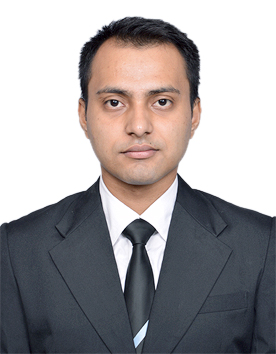
Introduction
Historically, Indian society has always laid greater emphasis on academics than the
pursuit of sports. Coupled with bureaucratic delays, the development of sport through the ages and various governments has been frustratingly slow. However, various National Sports Policies and the advent of various cash-rich sports leagues have catapulted the need to identify and develop sporting talent at the grassroots level to the forefront. Considering this need to identify and nurture sporting talent from a tender age, the Ministry of Youth Affairs and Sports (“MYAS”) introduced the National Sports Talent Search Scheme (“NSTSS”) in 2015. The NSTSS was instituted as a means to achieve the policy of “broad basing of sports” envisaged under the National Sports Policy, 2001. While the primary objective of the scheme is to facilitate the development and promotion of sports in India, the scheme also seeks to create avenues for recreation, by integrating sport into the school curriculum and incentivising it.
Scheme Overview and Implementation
The MYAS implements the NSTSS through a two-phased programme – (i) identification of sporting talent within the 8 – 12 years age group with inborn qualities and without any anatomical infirmities; and (ii) nurturing the sporting talent so identified and equipping them to excel at the national and international sports competitions. The scheme is implemented through an integrated approach by combining the efforts of the MYAS, the state governments, SAI and sports promotion organisations such as State Sports Associations or Councils. It also permits association with the IOA, National Sports Federations and other public and private and sports promotion bodies.
1. Identification of Sporting Talent
Sporting talent in the specified age group is identified through a series of 6 tests, conducted at three levels – school level, block level and state level, named the Physical Efficiency & Sports Aptitude Test (“PESAT”). Each participant is scored on each of the specified tests in accordance with a prescribed standard, and the highest scoring participants move on to the next level, for further screening. An indicative summary of PESAT and the number of participants that advance to the next level are provided in Figures 1 and 2 below.
Figure 1: Tests forming PESAT
Figure 2: Advancement of selected participants
2. Nurturing of sporting talent identified
The scheme seeks to identify an equal number of boys and girls from each state through the tests and provide them admission in various sporting academies identified to provide training by the state or into specified scholarship schemes to assist the development of the identified talent. While the scheme outline specifies the number of boys and girls that may be selected under the scheme from each state, the number is indicatory and may vary depending on the performance of the athletes during the PESAT. Further, in certain instances, the athletes selected to the scheme may also be admitted to private institutions. Each athlete selected under the scheme is mandatorily required to train for at least 22 days on the prescribed playground during each month.
Figure 3: Admission of selected athletes under the NSTSS are made to these specified institutions or scholarships.
3. Funding
An annual outlay of Rs. 42 crores has been earmarked for NSTSS, amounting to an estimated Rs. 210 crores for a period of 5 years. This funding is utilised under the following major heads:
a. Conduct of PESAT: While schools are expected to conduct the tests out of their own budget, funds are earmarked for conducting tests at the block and district level. Funds for block and district level are disbursed by the state government based on proposals submitted and in proportion to the number of blocks or districts where tests are to be conducted.
b. Development of software for the scheme.
c. Various administrative processes.
d. Funding of states through a consolidated fund to implement the scheme.
It is noteworthy, that the funding scheme provided in the NSTSS does not provide specific details regarding the utilisation of funds for nurturing the sporting talent identified. It may be inferred from the scheme outline that post the admission of the selected athletes in the specified sporting academies or scholarships, all expenses incurred in relation to the athlete’s training shall be borne by the state government out of the funding received under the NSTSS.
Analysis
While the NSTSS seeks to emulate similar schemes implemented worldwide, the NSTSS appears to fall short of an effective scheme for the development of sporting talent at the grassroots level, in terms of providing adequate funds to selected athletes. An athlete selected under the scheme receives a monthly sum of Rs. 7150/- which includes costs for sports apparel, insurance, competition exposure and a monthly stipend. This monthly expenditure allowance does not account for the accommodation costs that a selected athlete has to bear while training at the designated facility or the nutritional and medical requirements of the selected athlete. In comparison, grassroots level programmes in countries such Australia, provide for a structured stipend, reimbursement and competition based incentive programme that includes various aspects of an athlete’s training requirements, including nutritional, medical, injury management and rehabilitation needs.
Moreover, the PESAT does not select athletes on the basis of their proficiency in a single sport, but on the basis of a standardised series of tests and scoring mechanism. Thus, the selection procedure fails to differentiate between the specific requirements of individual sports, ultimately leading to a delay in the identification of talent specific to a sport or overlooking talent that may not meet the prescribed criteria of the PESAT but otherwise excel at a single sport. Therefore, in the opinion of the author, the PESAT may be altered to integrate the requirements specific to individual sports, and the selection procedures should be utilised to identify talent in specific sports rather than creating a base pool of students with athletic abilities. Largely, this new selection procedure may emulate the English model in which each sport is responsible for identification of talent in its respective discipline, through an evaluation criteria that is based on research undertaken by sports scientists and professionals to determine the profile of a successful athlete in that sport.
Furthermore, the NSTSS must expand to account for identification of sporting talent amongst differently abled children and their integration into para-sport at an early age. As such, the scheme and the PESAT is aimed at identifying sporting talent from amongst able bodied children, and makes no mention of and provides no benefits to differently abled athletes. In stark contrast, most nations with elite sporting histories have well defined schemes for nurturing para-athletes from a young age.
Conclusion
The NSTSS, while definitely being a step in the right direction, leaves scope for improvement. A scheme of such nature must be supplemented with viable supporting programmes, such as programmes that institute competent physical education trainers at the school level for early development of a student athlete. Furthermore, the scheme must also consider the development of appropriate infrastructure and administrative structure at the school and block levels to ensure effective selection. In order for the NSTSS to succeed, the government must look to implement various other programmes in its support.
All in all, the NSTSS is a giant leap in broad-basing sports and integrating it into the education curriculum.
Also Read :
